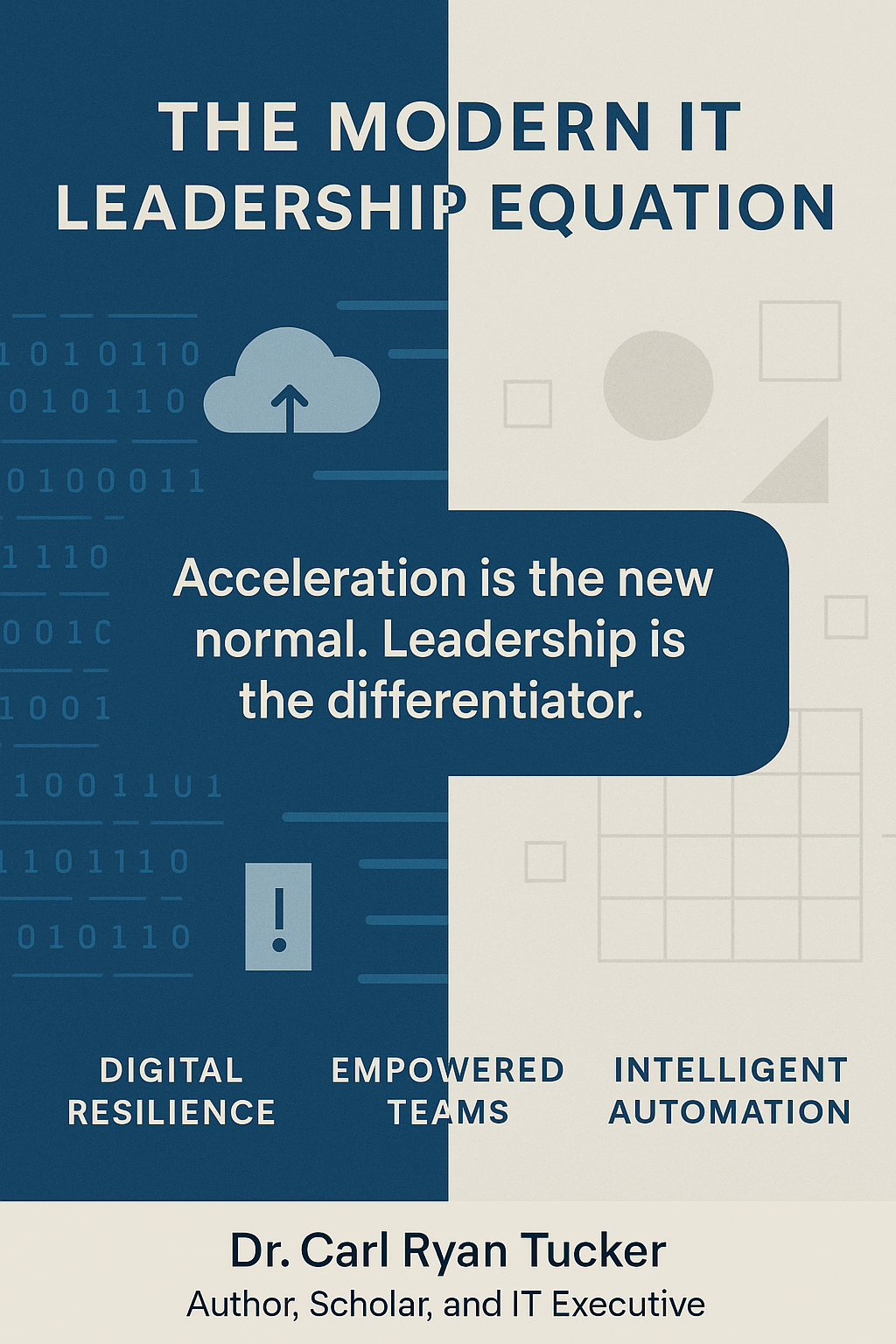A Landscape Moving Faster Than Traditional Strategy Can Handle

Technology has always moved quickly, but the current pace is different. Entire capability areas that once evolved on multi-year cycles now shift within months (and in some cases, weeks). Cloud modernization, zero trust adoption, automation, and data-centric operations have changed how organizations plan, execute, and sustain their mission. Leaders who built their careers on structured, sequential transformation models are now confronting a world that requires iteration, experimentation, and continuous readiness.
The acceleration is not simply technological though. It is cultural and operational too. Teams are expected to keep systems stable while integrating new tools, responding to increasing cyber threats, and aligning with shifting stakeholder expectations. Government priorities evolve, funding profiles fluctuate, and technical environments grow more interdependent. In this type of environment, the question is no longer how to transform but how to remain adaptable without losing coherence.
The organizations finding success today are those that accept the pace as the new normal and build leadership frameworks around resilience, transparency, and rapid learning. They understand that transformation is a standing operating condition instead of an event to deal with.
The Forces Reshaping the Modern IT Enterprise
Several structural forces are redefining what effective leadership looks like.
The first force is the elevation of digital resilience as a strategic imperative. Cybersecurity is no longer a parallel track to operational work. It is integral to every program decision and performance metric. Leaders must think across multiple layers of risk at once. They constantly need to address vulnerabilities, prepare for disruption, and design continuity into the fabric of mission delivery.
The second force is the cultural shift toward clarity and empowerment. Modern IT teams perform best when they understand the mission, the boundaries of decision making, and the meaning of their work. They are not motivated by top-down directives alone. They are motivated when leaders articulate purpose, remove friction, and trust teams to deliver within well-defined governance. Leaders who excel here create psychological safety, encourage constructive dissent, and frame change as an opportunity instead of a threat.
The third force is the rapid integration of automation and AI. Workflows that required significant manual coordination are now executed through orchestrated pipelines, predictive analytics, and intelligent monitoring systems. This evolution reshapes workforce design, operating models, and expectations around scale. Today’s leaders need to guide teams through this transition with a grounding in ethics, mission value, and human centered adoption strategies. Automation only amplifies talent when used thoughtfully and erodes culture when imposed without context.
When viewed together, these forces signal a broader truth. The future belongs to leaders who can translate complexity into direction. The leaders who connect strategy to action will shape the next decade of IT modernization.
Balancing Acceleration, Stability, and Human Impact
The central tension in this moment is the balance between rapid change and organizational stability. Move too fast and teams burn out. Move too slow and the organization falls behind. The skill lies in pacing change without compromising mission or morale.
Stability comes from a few core leadership behaviors. The first is maintaining a coherent narrative. Teams need a shared understanding of what is changing, why it matters, and how their work supports the larger mission. The second is establishing consistent decision rights and communication channels. The third is investing in mid-level leaders who can bridge strategy and operations with confidence.

Leaders also need to acknowledge the human impact of acceleration. Technical environments evolve, but people experience the strain in very real ways. They absorb new workloads, new expectations, and new uncertainties and leaders who address this openly create environments where teams feel valued, heard, and protected. This builds resilience, which becomes the stabilizer that makes rapid change sustainable.
When stability and acceleration are aligned, organizations become capable of continuous modernization. They move confidently through shifting priorities because their leaders have grounded the mission in clarity and purpose.
A Shared Conversation for a Shared Future
No leader can navigate this pace alone. Our field is too interconnected, too complex, and too dependent on shared insight. The most effective leaders learn from one another. They engage peers, test ideas, debate strategies, and refine their thinking through conversation.
This is why community matters. When leaders in IT, cybersecurity, engineering, data, and government come together, the collective perspective becomes sharper. Patterns emerge more clearly, risks become easier to anticipate, and opportunities become easier to act on.
The moment we are living in carries both pressure and possibility. The pressure comes from the weight of expectations. The possibility comes from the opportunity to shape what comes next. Every program, every agency, and every enterprise is navigating this landscape in real time. The leaders who help each other clarify the path are the leaders who will define the next era of mission delivery.
I welcome perspectives from across the industry. Insight grows stronger when it is shared and the future becomes clearer when we build it together.
